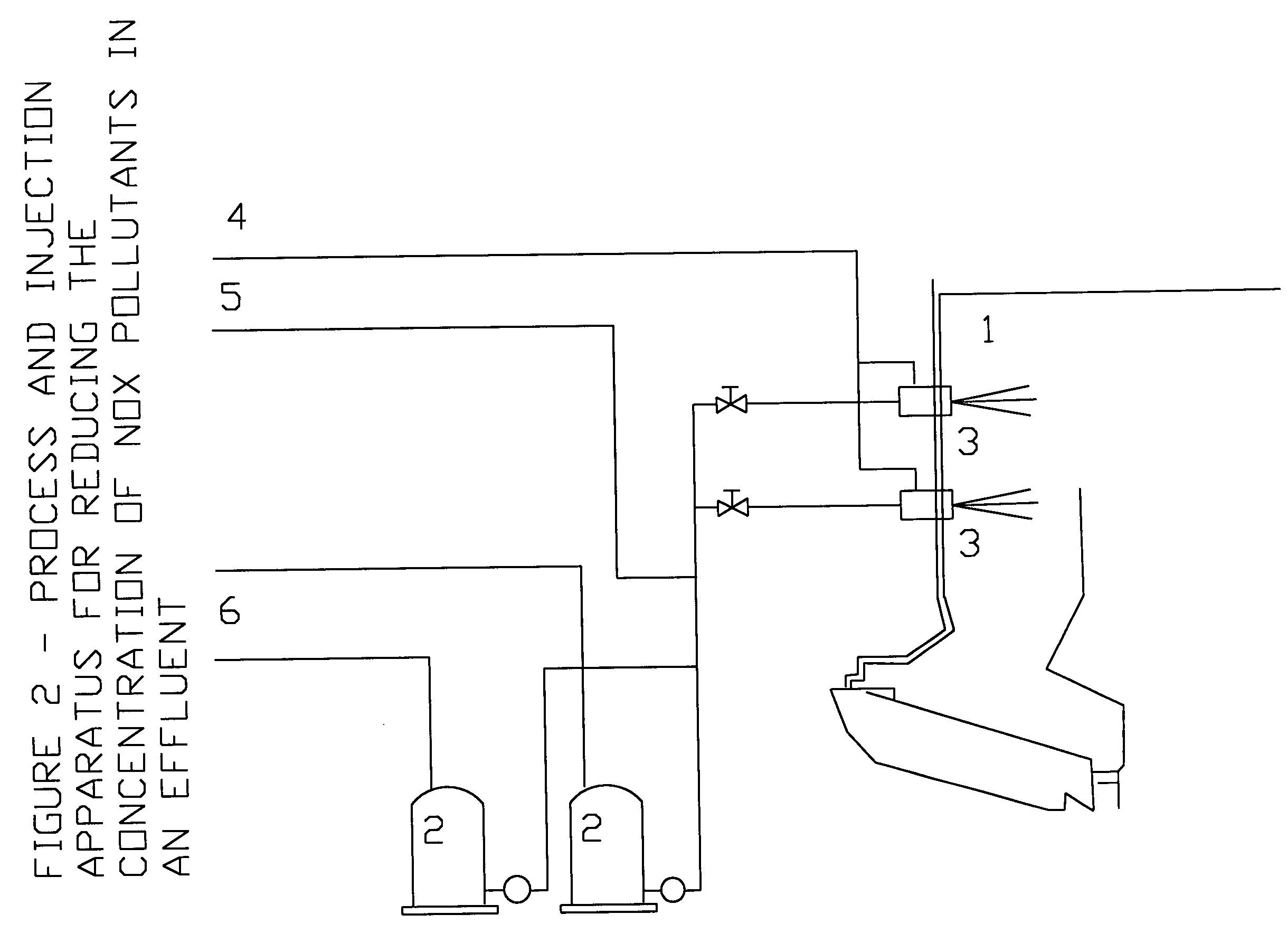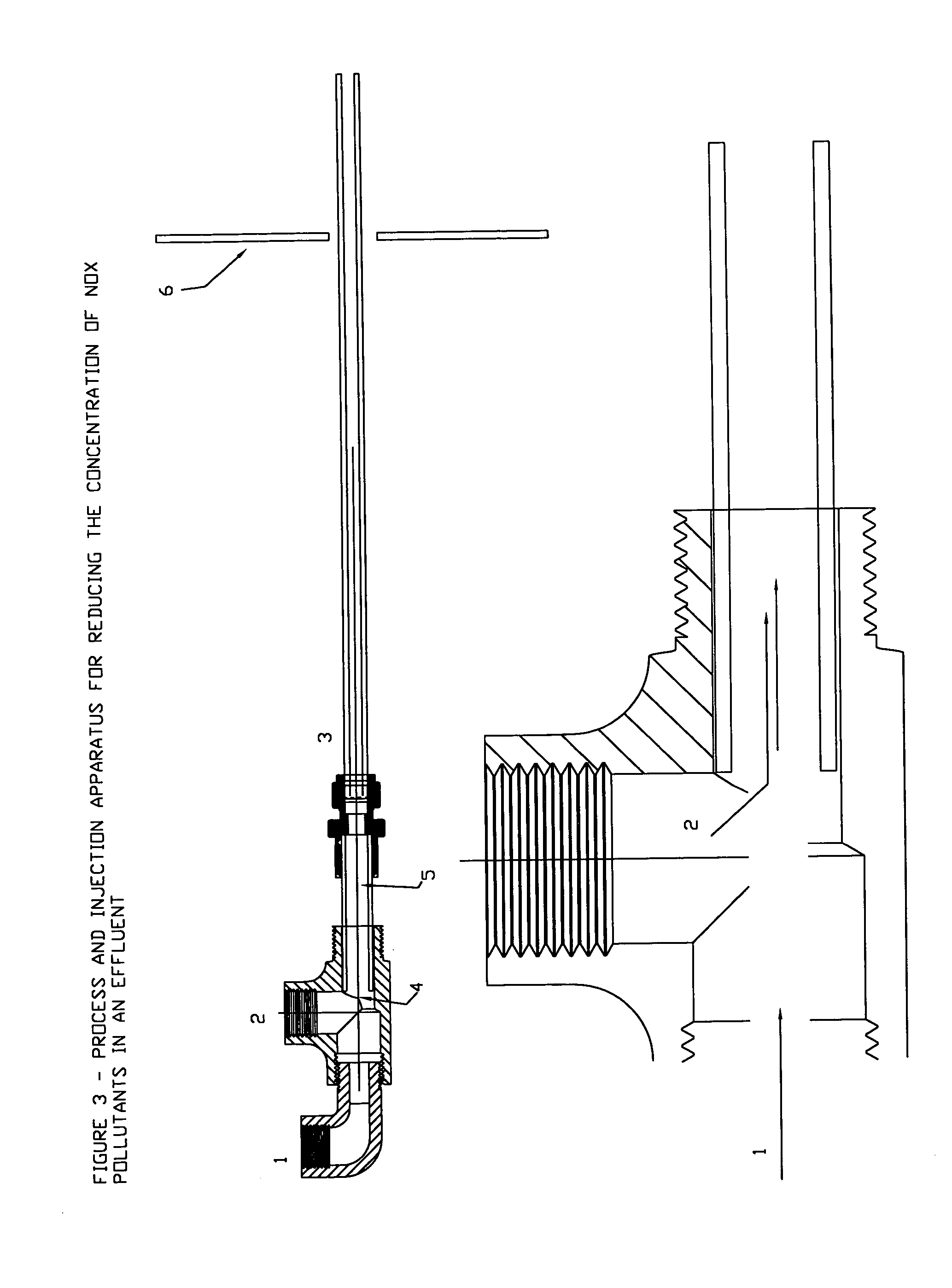Process and injection apparatus for reducing the concentration of NOX pollutants in an effluent
- Summary
- Abstract
- Description
- Claims
- Application Information
AI Technical Summary
Benefits of technology
Problems solved by technology
Method used
Image
Examples
Embodiment Construction
[0021]FIG. 1 illustrates one version of the injector apparatus in which an atomization medium is introduced to the assembly in the axial direction, item 1. The atomization medium travels through a small inner conduit, terminating coaxially and concentrically inside a larger mixing chamber, item 5. The SNCR reagent, either liquid or gaseous is introduced to the mixing chamber via the annular opening formed between the atomization medium conduit and the mixing chamber. The orientation of the two fluid streams allows the transfer of energy and momentum from the atomization medium to the SNCR reagent. The mixed fluids are conveyed past the boiler wall (item 6) via a single walled atomization conduit (item 3). The atomization conduit extends into the combustion effluent and produces a jet spray which mixes the SNCR reagent with the combustion effluent.
[0022]FIG. 2 is a schematic diagram of the overall SNCR process. The combustor, item 1, produces a high temperature effluent into which S...
PUM
 Login to View More
Login to View More Abstract
Description
Claims
Application Information
 Login to View More
Login to View More - R&D
- Intellectual Property
- Life Sciences
- Materials
- Tech Scout
- Unparalleled Data Quality
- Higher Quality Content
- 60% Fewer Hallucinations
Browse by: Latest US Patents, China's latest patents, Technical Efficacy Thesaurus, Application Domain, Technology Topic, Popular Technical Reports.
© 2025 PatSnap. All rights reserved.Legal|Privacy policy|Modern Slavery Act Transparency Statement|Sitemap|About US| Contact US: help@patsnap.com



